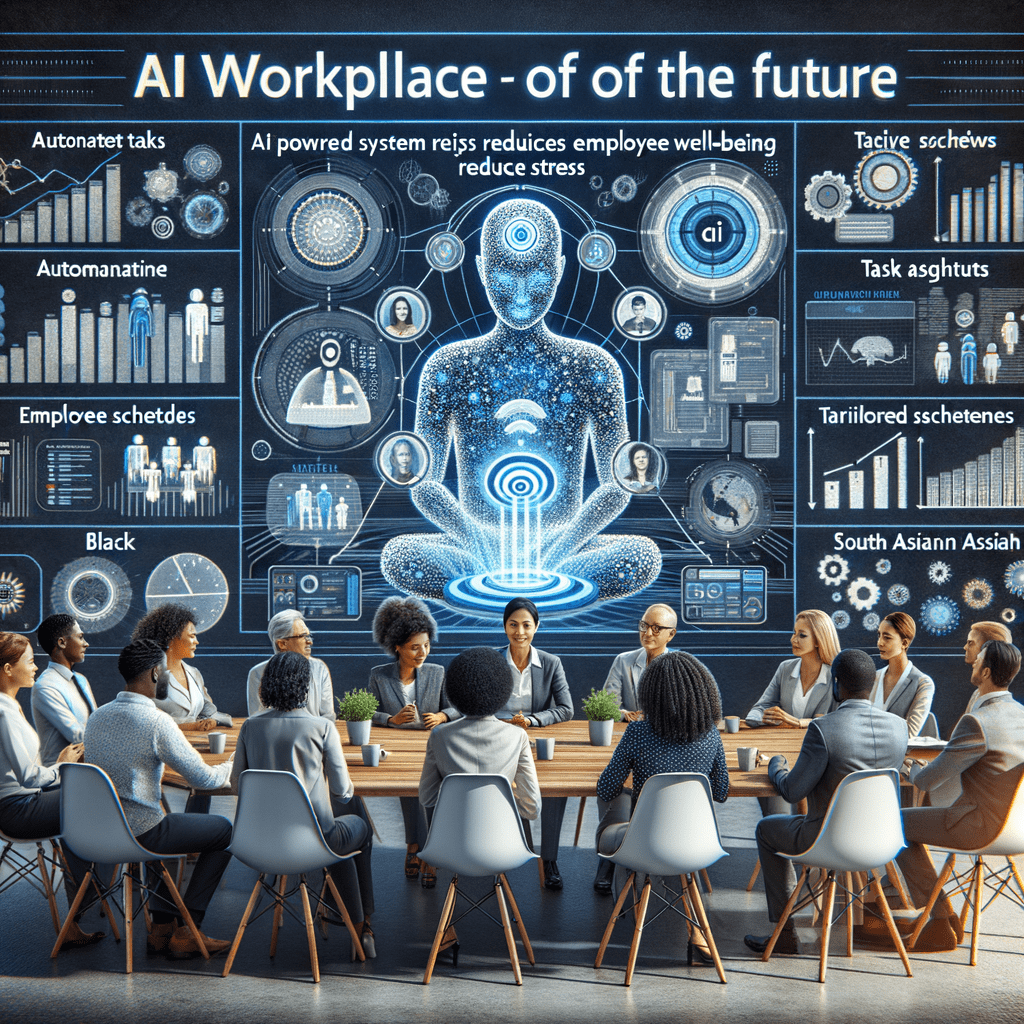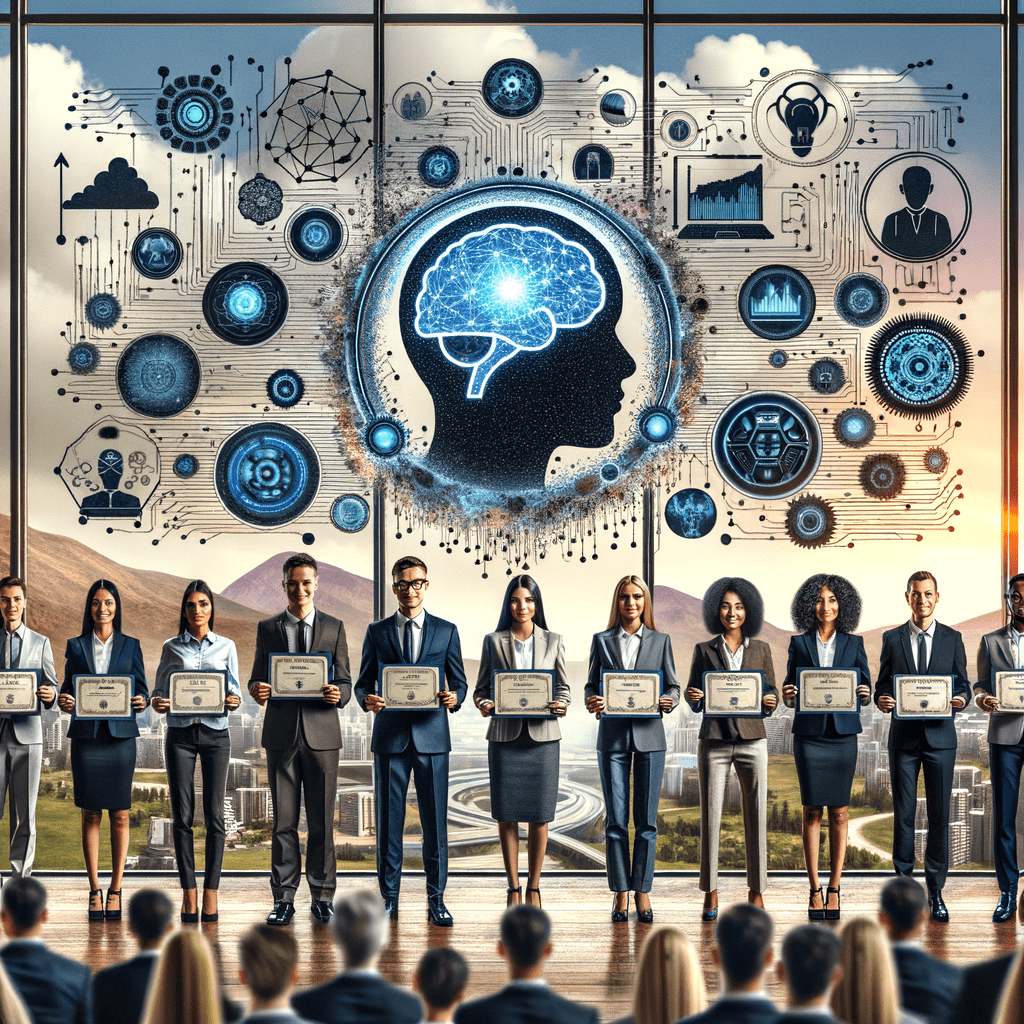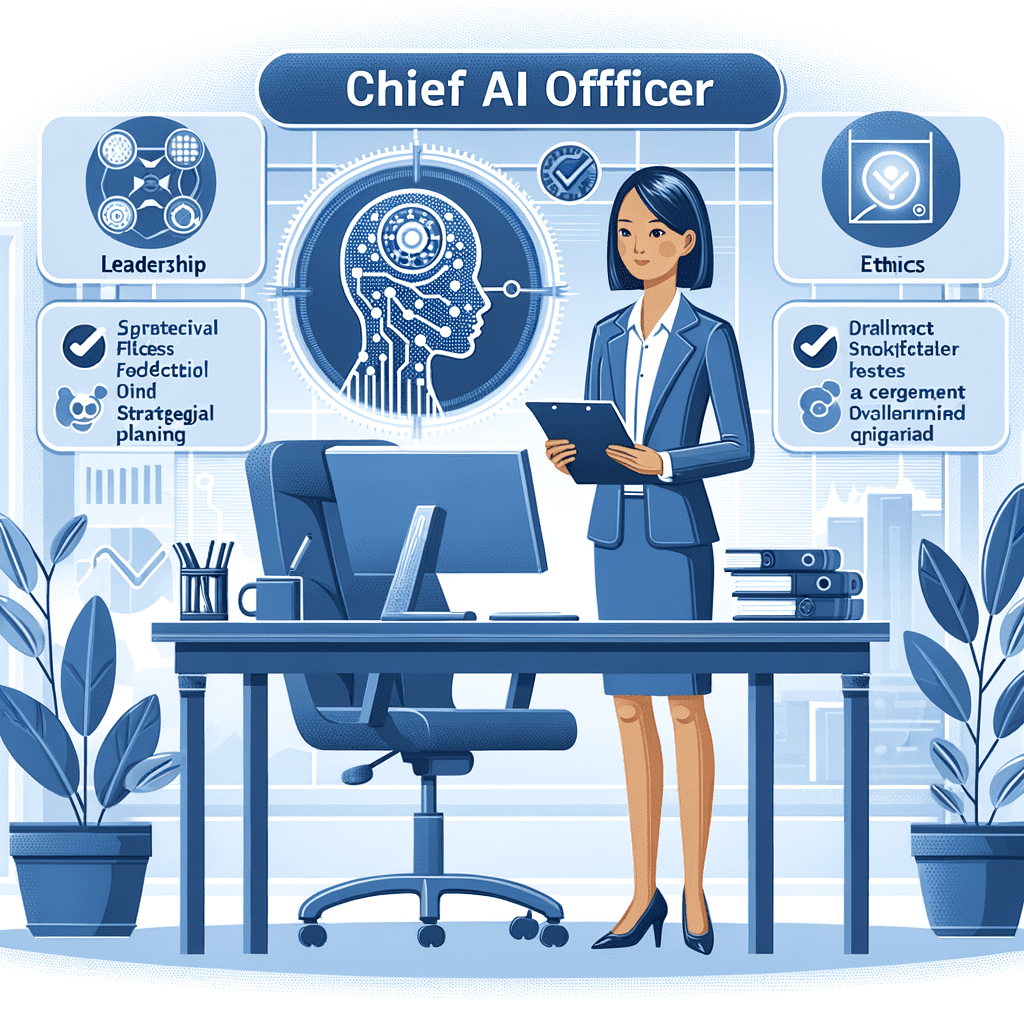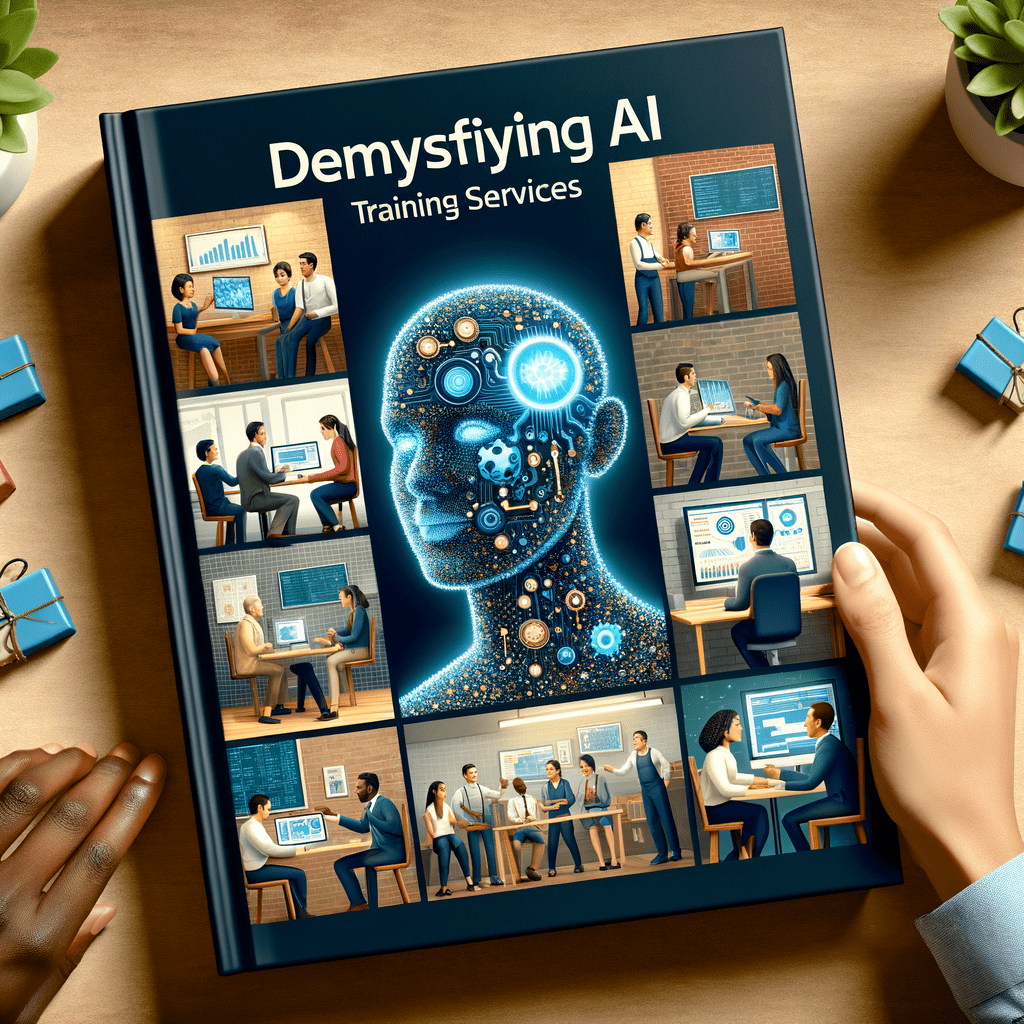Introduction to AI in the Workplace
Artificial Intelligence (AI) is revolutionizing the workplace, transforming how businesses operate and employees collaborate. This article explores the various ways AI is reshaping the marketing, human resources, and overall business landscape, providing insights into the strategies and tools necessary for successful AI integration.
As AI technologies continue to advance, businesses must stay ahead of the curve to maintain a competitive edge. This guide will delve into the key steps required to build a human-centric approach to AI adoption, ensuring a smooth, ethical, and value-driven integration for any organization.
How AI is Reshaping the Marketing and Martech Environment
The integration of AI in marketing and marketing technology (Martech) has led to significant advancements in customer engagement, personalization, and campaign optimization. AI-powered tools can analyze vast amounts of data, identify patterns, and deliver highly targeted and personalized content, enhancing the overall customer experience. By leveraging AI, businesses can streamline their marketing efforts, automate repetitive tasks, and make data-driven decisions that drive growth and revenue.
As the Martech landscape continues to evolve, it is crucial for businesses to stay informed about the latest AI-powered tools and strategies to maintain a competitive edge. By embracing AI in marketing, organizations can unlock new opportunities for innovation, efficiency, and customer-centric success.
Crafting a Winning AI Adoption Strategy for Your Business
Implementing AI within an organization requires a well-planned and strategic approach. Businesses must carefully assess their current capabilities, identify pain points, and develop a comprehensive plan to ensure successful AI integration. This includes defining clear objectives, allocating resources, and fostering a culture of innovation and continuous learning.
By crafting a winning AI adoption strategy, businesses can maximize the benefits of AI while mitigating potential risks and challenges. This approach empowers organizations to leverage AI to streamline operations, enhance decision-making, and deliver superior products and services to their customers.
Boosting AI Employee Happiness: Key Strategies for Success
The integration of AI in the workplace can have a significant impact on employee happiness and well-being. By automating repetitive and mundane tasks, AI can free up employees to focus on more meaningful and fulfilling work. Additionally, AI-powered tools can provide personalized learning and development opportunities, helping employees enhance their skills and stay engaged.
To ensure a successful AI implementation, businesses must prioritize employee happiness and well-being. This includes fostering a transparent and collaborative work environment, providing adequate training and support, and aligning AI initiatives with employee needs and expectations. By adopting these strategies, organizations can create a positive and productive AI-enabled workforce that drives overall business success.
How Generative AI in HR Transforms Employee Experience
Generative AI, a powerful subset of AI, is transforming the human resources (HR) landscape by automating various tasks and enhancing the employee experience. From streamlining the recruitment process to providing personalized learning and development opportunities, generative AI can significantly improve HR operations and strategies.
However, the integration of generative AI in HR also presents challenges, particularly in addressing inherent biases. Businesses must exercise caution and implement robust governance frameworks to ensure ethical and unbiased AI-powered HR practices. By navigating these challenges, organizations can leverage the power of generative AI to create a more engaging, efficient, and equitable work environment for their employees.
AI-Enabled Workforce: What It Is & How It Impacts Us
The rise of AI-enabled workforce solutions is transforming the way we work. These advanced technologies, such as intelligent automation and machine learning, are empowering employees to be more productive, collaborative, and adaptable. By automating repetitive tasks and providing real-time insights, AI-enabled workforce solutions can enhance employee engagement, improve decision-making, and drive overall business performance.
As the adoption of AI-enabled workforce solutions continues to grow, it is essential for businesses to understand the benefits, challenges, and the potential impact on the workforce. By embracing this technological shift and implementing a strategic approach, organizations can leverage the power of AI to create a more efficient, innovative, and human-centric work environment.
Boosting Business with AI Employee Engagement Tools
Maintaining a highly
Introduction to AI in the Workplace
Artificial Intelligence (AI) is revolutionizing the workplace, transforming how businesses operate and employees collaborate. This article explores the various ways AI is reshaping the marketing, human resources, and overall business landscape, providing insights into the strategies and tools necessary for successful AI integration.
As AI technologies continue to advance, businesses must stay ahead of the curve to maintain a competitive edge. This guide will delve into the key steps required to build a human-centric approach to AI adoption, ensuring a smooth, ethical, and value-driven integration for any organization.
How AI is Reshaping the Marketing and Martech Environment
The integration of AI in marketing and marketing technology (Martech) has led to significant advancements in customer engagement, personalization, and campaign optimization. AI-powered tools can analyze vast amounts of data, identify patterns, and deliver highly targeted and personalized content, enhancing the overall customer experience. By leveraging AI, businesses can streamline their marketing efforts, automate repetitive tasks, and make data-driven decisions that drive growth and revenue.
As the Martech landscape continues to evolve, it is crucial for businesses to stay informed about the latest AI-powered tools and strategies to maintain a competitive edge. By embracing AI in marketing, organizations can unlock new opportunities for innovation, efficiency, and customer-centric success.
Crafting a Winning AI Adoption Strategy for Your Business
Implementing AI within an organization requires a well-planned and strategic approach. Businesses must carefully assess their current capabilities, identify pain points, and develop a comprehensive plan to ensure successful AI integration. This includes defining clear objectives, allocating resources, and fostering a culture of innovation and continuous learning.
By crafting a winning AI adoption strategy, businesses can maximize the benefits of AI while mitigating potential risks and challenges. This approach empowers organizations to leverage AI to streamline operations, enhance decision-making, and deliver superior products and services to their customers.
Boosting AI Employee Happiness: Key Strategies for Success
The integration of AI in the workplace can have a significant impact on employee happiness and well-being. By automating repetitive and mundane tasks, AI can free up employees to focus on more meaningful and fulfilling work. Additionally, AI-powered tools can provide personalized learning and development opportunities, helping employees enhance their skills and stay engaged.
To ensure a successful AI implementation, businesses must prioritize employee happiness and well-being. This includes fostering a transparent and collaborative work environment, providing adequate training and support, and aligning AI initiatives with employee needs and expectations. By adopting these strategies, organizations can create a positive and productive AI-enabled workforce that drives overall business success.
How Generative AI in HR Transforms Employee Experience
Generative AI, a powerful subset of AI, is transforming the human resources (HR) landscape by automating various tasks and enhancing the employee experience. From streamlining the recruitment process to providing personalized learning and development opportunities, generative AI can significantly improve HR operations and strategies.
However, the integration of generative AI in HR also presents challenges, particularly in addressing inherent biases. Businesses must exercise caution and implement robust governance frameworks to ensure ethical and unbiased AI-powered HR practices. By navigating these challenges, organizations can leverage the power of generative AI to create a more engaging, efficient, and equitable work environment for their employees.
AI-Enabled Workforce: What It Is & How It Impacts Us
The rise of AI-enabled workforce solutions is transforming the way we work. These advanced technologies, such as intelligent automation and machine learning, are empowering employees to be more productive, collaborative, and adaptable. By automating repetitive tasks and providing real-time insights, AI-enabled workforce solutions can enhance employee engagement, improve decision-making, and drive overall business performance.
As the adoption of AI-enabled workforce solutions continues to grow, it is essential for businesses to understand the benefits, challenges, and the potential impact on the workforce. By embracing this technological shift and implementing a strategic approach, organizations can leverage the power of AI to create a more efficient, innovative, and human-centric work environment.
Boosting Business with AI Employee Engagement Tools
Maintaining a highly







